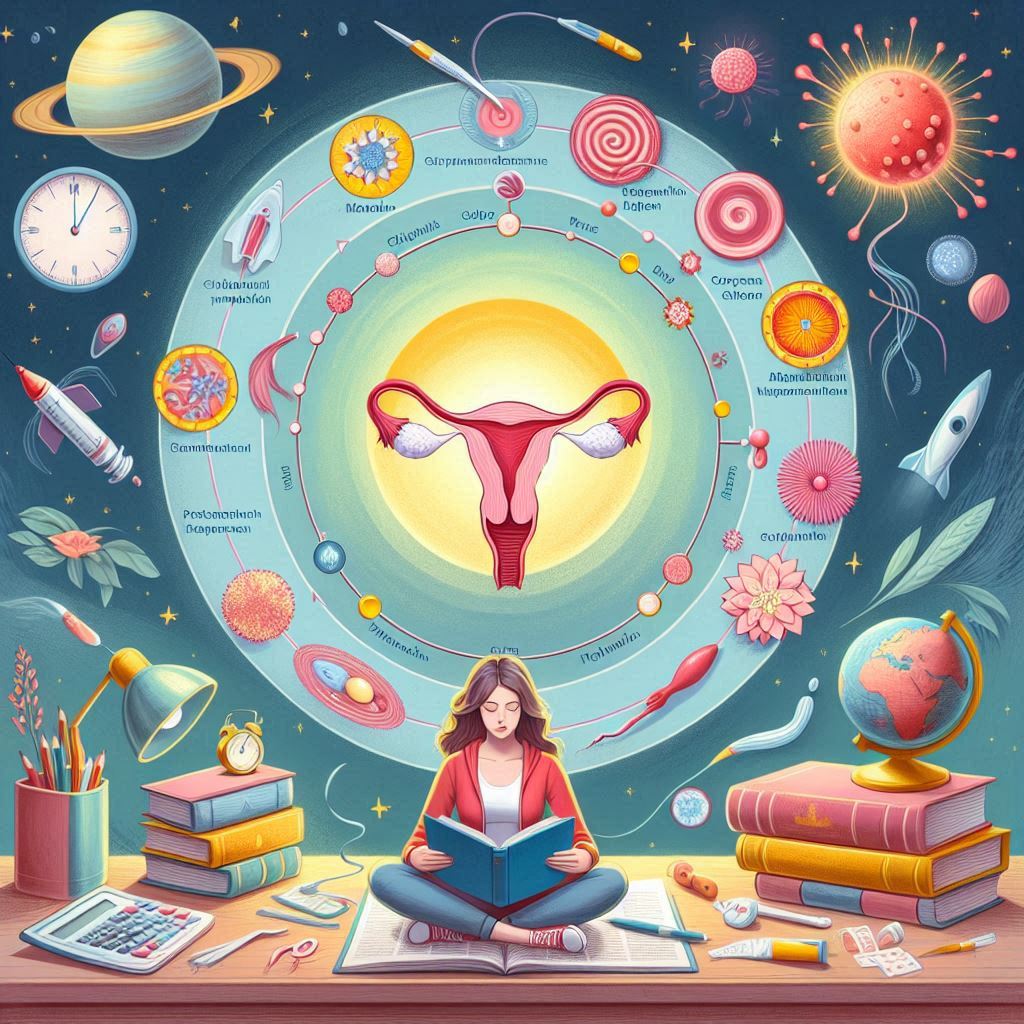Exploring the Stages of Menstrual Cycle: Menstruation, Ovulation and Beyond

Understanding the Stages of Menstrual Cycle: Menstruation, Ovulation is essential for women to manage their reproductive health. The cycle, a complex series of hormonal changes, can impact overall well-being and fertility. This article explores the phases of the menstrual cycle, the importance of tracking, and how to manage and understand each stage.
- What Is the Menstrual Cycle?
- What Are the Four Distinct Phases of the Menstrual Cycle?
- How Do Hormonal Changes Affect the Menstrual Cycle?
- What Is the Importance of Tracking Your Menstrual Cycle?
- How Can You Identify Each Phase of the Menstrual Cycle?
- What Are Common Symptoms Experienced During the Menstrual Cycle?
- How Do Menstrual Cycles Vary Among Individuals?
- Exploring the Stages of Menstrual Cycle: Questions and Answers
What Is the Menstrual Cycle?
The menstrual cycle is a natural process that prepares a woman's body for pregnancy each month. It involves the coordination of the brain, ovaries, and uterus, with hormones regulating each step. The cycle begins on the first day of menstruation and ends the day before the next period begins.
Understanding this cycle is crucial for recognizing normal bodily functions, and any potential issues that may arise. It's not just about fertility, but also about general health and well-being.
What Are the Four Distinct Phases of the Menstrual Cycle?
The menstrual cycle can be divided into four distinct phases: the menstrual phase, the follicular phase, the ovulation phase, and the luteal phase, each regulated by hormonal changes. Let’s delve into the specifics of each phase.
- Menstrual Phase: This phase starts on the first day of menstruation when the uterine lining sheds.
- Follicular Phase: Overlapping with menstruation, it involves the maturation of follicles in the ovaries.
- Ovulation Phase: This is when a mature egg is released from the ovary.
- Luteal Phase: Following ovulation, this phase sees the uterus lining thicken, readying for potential pregnancy.
How Do Hormonal Changes Affect the Menstrual Cycle?
Hormonal regulation is the linchpin of the menstrual cycle. A delicate interplay of hormones like estrogen and progesterone dictates each phase. These hormonal changes can also result in physical and emotional symptoms that many women experience throughout their cycle.
The rise and fall of these hormones not only prepare the body for pregnancy but also affect mood, energy levels, and overall health. If fertilization does not occur, the hormone levels drop, leading to the start of the menstrual phase.
What Is the Importance of Tracking Your Menstrual Cycle?
Tracking your menstrual cycle can offer invaluable insights into your reproductive health. It helps in identifying patterns, predicting ovulation, and recognizing any irregularities that might need medical attention. Moreover, it's a window into your hormonal health, affecting various aspects of life.
By monitoring the cycle, women can plan around their most fertile days, understand their mood swings, and manage symptoms more effectively.
How Can You Identify Each Phase of the Menstrual Cycle?
Identifying each phase involves observing your body and its signals. For instance, during the ovulation phase, you might notice a clear, stretchy cervical mucus, which indicates higher fertility. Similarly, mood swings or cramping can signal the onset of the menstrual phase.
Apps and period trackers can assist in logging symptoms and spotting patterns, making identification easier over time. It's a powerful form of menstrual awareness and self-care.
What Are Common Symptoms Experienced During the Menstrual Cycle?
Common symptoms vary from person to person but can include cramps, bloating, breast tenderness, mood swings, and headaches. These symptoms can be mild or severe, and they might change throughout the different menstrual cycle phases.
While some discomfort is normal, severe pain or drastic mood changes should be discussed with a healthcare provider, as they could indicate underlying conditions.
How Do Menstrual Cycles Vary Among Individuals?
Menstrual cycles can vary greatly among individuals. While the average cycle is around 28 days, it can range from 24 to 38 days. Factors such as age, stress, and health conditions can influence cycle length and regularity.
Understanding that there is a wide range of what's considered "normal" can alleviate concerns, but if there are significant changes in your cycle, it's worth investigating further.

Exploring the Stages of Menstrual Cycle: Questions and Answers
What Are the 4 Phases of the Menstrual Cycle?
The menstrual cycle consists of the menstrual phase, follicular phase, ovulation phase, and luteal phase. Understanding each phase offers a clearer picture of fertility and overall health.
Recognizing these phases helps in managing symptoms, planning around fertility, and maintaining a dialogue with healthcare providers regarding reproductive health.
What Is the Phase From Ovulation to Menstruation?
The phase between ovulation and menstruation is known as the luteal phase. During this phase, the body prepares for a potential pregnancy. If the egg is not fertilized, hormone levels decrease and menstruation begins, marking the start of a new cycle.
The luteal phase typically lasts about two weeks, but this can vary among individuals.
When Is the Ovulation Phase of the Menstrual Cycle?
The ovulation phase generally occurs in the middle of the cycle, around day 14 of a 28-day cycle. However, it can vary depending on the individual's cycle length.
It’s during this phase that an egg is released from the ovary, presenting the highest chance of pregnancy if sexual intercourse occurs.
How Many Days After Your Menstrual Cycle Do You Ovulate?
Ovulation usually occurs around 10 to 16 days after the start of your last menstrual period. This timing can be influenced by the overall length of your menstrual cycle.
Tracking ovulation can be particularly useful for those trying to conceive or looking to avoid pregnancy.
For a more in-depth understanding of the ovulation phase, watch this informative video:
In conclusion, comprehending the Stages of Menstrual Cycle: Menstruation, Ovulation is vital for women to recognize the signs their bodies give them and to manage their health effectively. It's an important aspect of overall well-being and empowers women with the knowledge to navigate their reproductive health proactively.

Leave a Reply